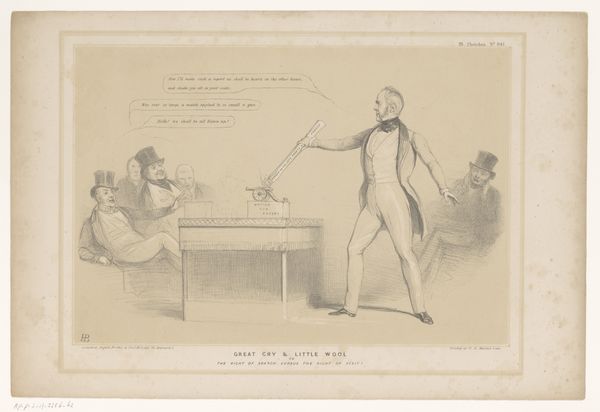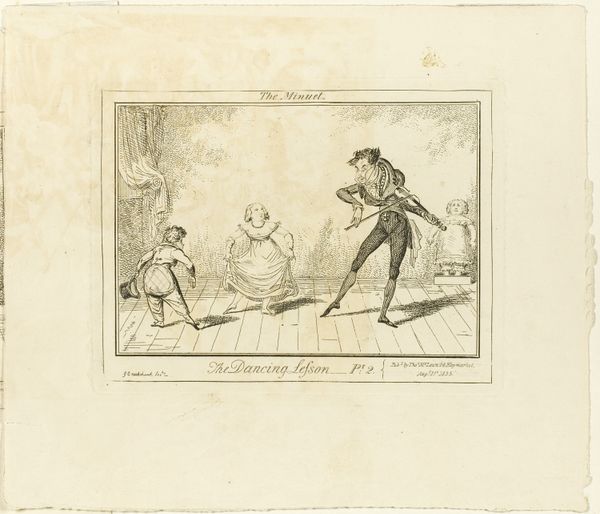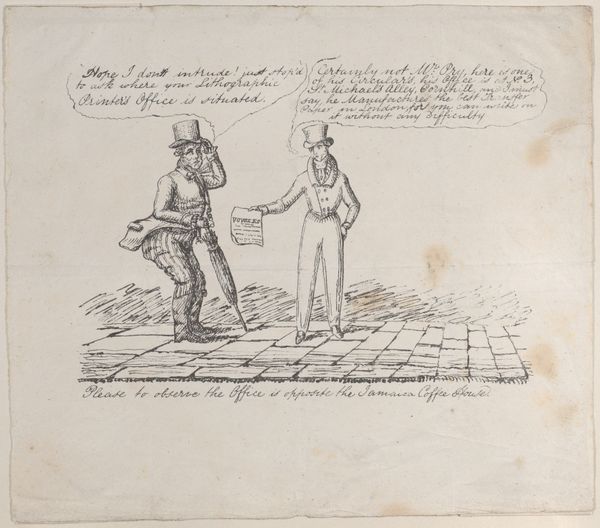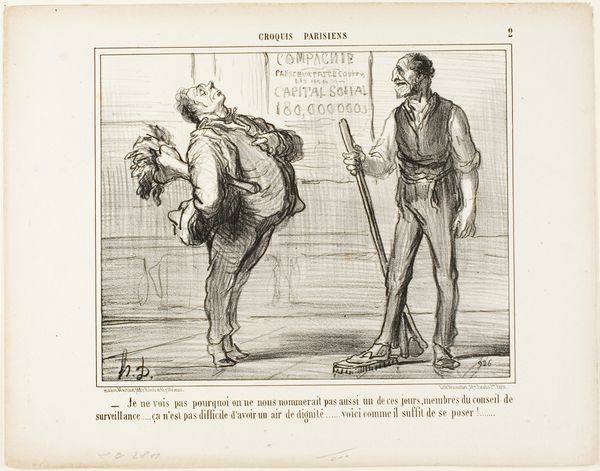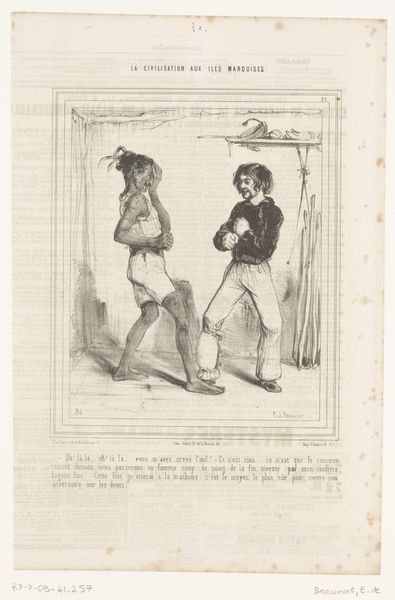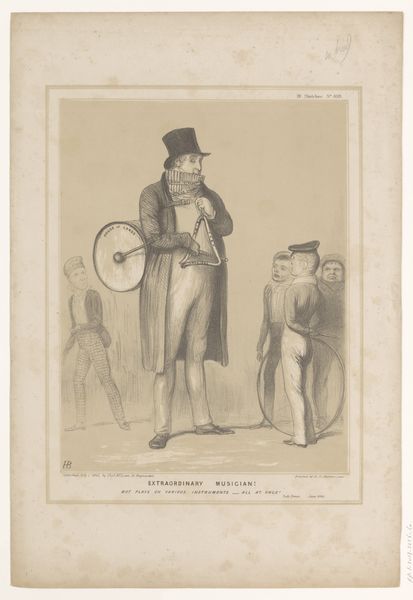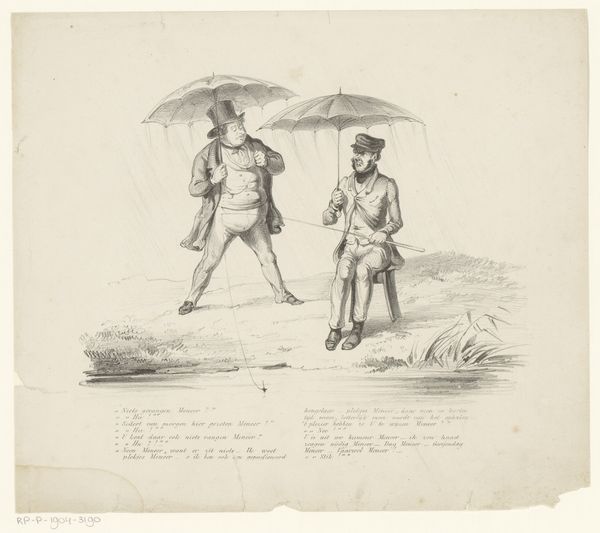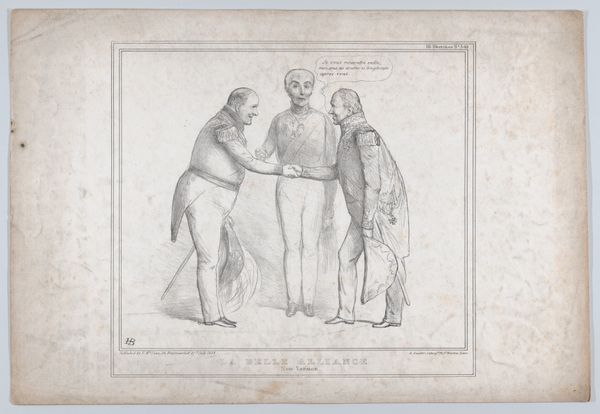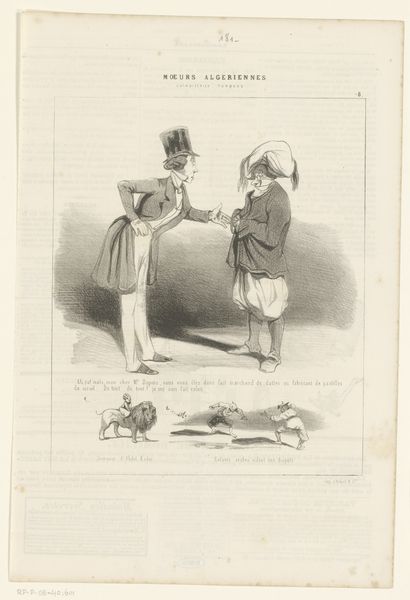
drawing, paper, pencil
#
portrait
#
drawing
#
caricature
#
pencil sketch
#
paper
#
romanticism
#
pencil
#
genre-painting
#
history-painting
Dimensions: height 300 mm, width 445 mm
Copyright: Rijks Museum: Open Domain
Curator: This drawing, “Spotprent met Roebuck en Lord Bentinck,” possibly from 1847, is by John Doyle and resides here at the Rijksmuseum. The artist rendered this image in pencil on paper. Editor: Well, immediately, I'm struck by how spare the lines are; the almost bleached tone of the paper amplifies a kind of raw, confrontational energy. It feels almost performative. Curator: Yes, "performative" hits the mark. Doyle was a master of political caricature, wasn’t he? Look at Roebuck, poised on that small step, his finger a weapon, projecting… Editor: But look closer at the hand – you can practically see the tool making these marks, the quick strokes suggesting fury or impatience, the artist capturing a fleeting moment in graphite. The social act of seeing and consuming, right? How was it circulated? Curator: Consider Roebuck’s extended hand, pointing emphatically toward Bentinck. The speech bubble shows an excerpt which satirizes contemporary oratory: he is positioned above the men he’s “lecturing”. The symbolism…Roebuck embodies this specific type of impassioned parliamentarian. Editor: Still, what kind of paper allowed Doyle such immediacy? I wonder if the drawing’s dissemination depended heavily on reproducing the initial pencil sketch using contemporary printmaking technology, like lithography? It's the process of reproduction itself that fascinates me. Curator: Precisely! This interplay of the hand-drawn image, the printing process, and the political content speaks to broader shifts in social discourse, really. These caricatures helped shape public opinion. The potency lies not just in what’s represented, but in how it reflects and fuels prevailing sentiments, wouldn’t you agree? Editor: Absolutely. By looking closely at Doyle’s choice of medium and reproductive possibilities we are looking at its time and can perhaps learn more about the print culture that consumed his political perspectives. Curator: Indeed, the dialogue between materials, imagery, and context grants us insight, even now, into a vibrant moment in history, as this lampoon has remained charged throughout the centuries. Editor: Right, materials never lie; in the paper's weave, we see more than the artist may have ever considered during its construction.
Comments
No comments
Be the first to comment and join the conversation on the ultimate creative platform.
